Abstract
Incubation for a short time of arachidonic acid with the microsomal fraction of a homogenate of the vesicular gland of sheep in the presence of 1 mM p-mercuribenzoate followed by extraction and silicic acid chromatography yielded two prostaglandin endoperoxides. The structures of these compounds, i.e., 15-hydroperoxy-9α,11α-peroxidoprosta-5,13-dienoic acid (prostaglandin G2) and 15-hydroxy-9α,11α-peroxidoprosta-5,13-dienoic acid (prostaglandin H2), were assigned mainly by a number of chemical transformations into previously known prostaglandins. The new prostaglandins were 50-200 times (prostaglandin G2) and 100-450 times (prostaglandin H2) more active than prostaglandin E2 on the superfused aorta strip. The half-life of the prostaglandin endoperoxides in aqueous medium (about 5 min) was significantly longer than that of “rabbit aorta-contracting substance” released from guinea pig lung, indicating that none of the prostaglandin endoperoxides is identical with this factor. Addition of 10-300 ng/ml of the endoperoxides to suspensions of washed human platelets resulted in rapid aggregation. Furthermore, platelet aggregation induced by thrombin was accompanied by release of material reducible by stannous chloride into prostaglandin F2α, thus indicating the involvement of endogenous prostaglandin endoperoxides in platelet aggregation.
Keywords: 15-hydroperoxy endoperoxide, 15-hydroxy endoperoxide, platelet aggregation, contraction of rabbit aorta
Full text
PDF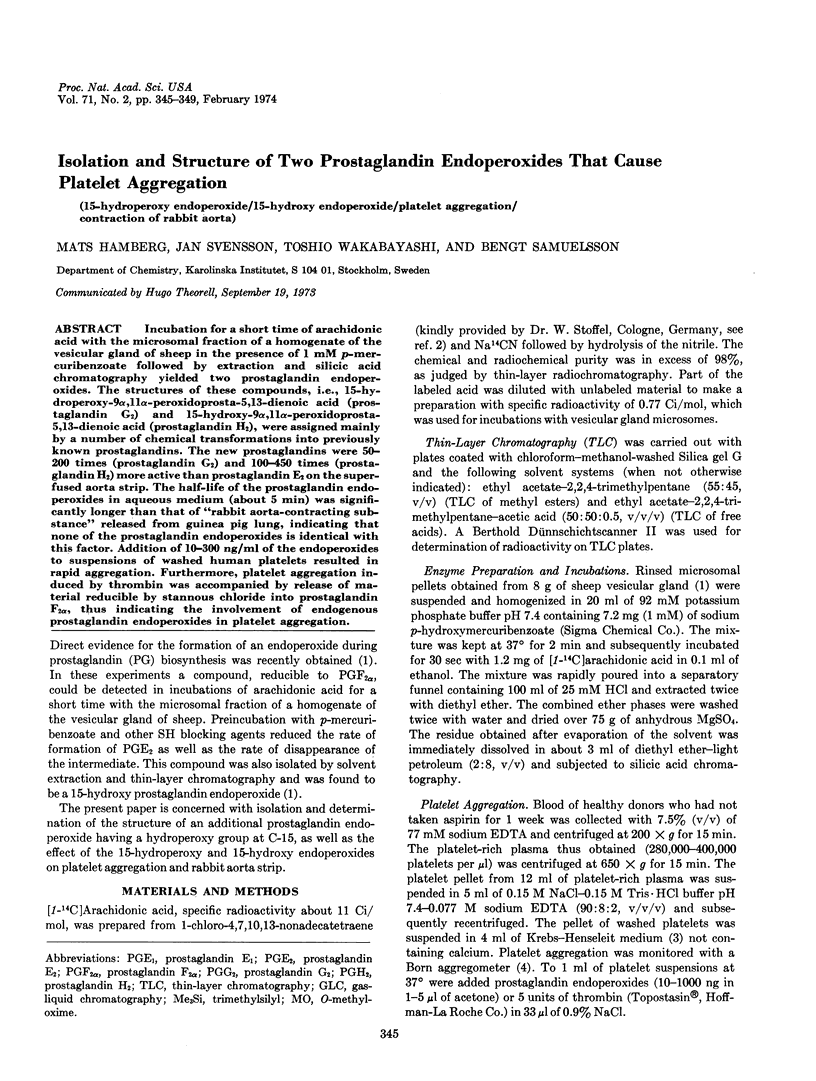
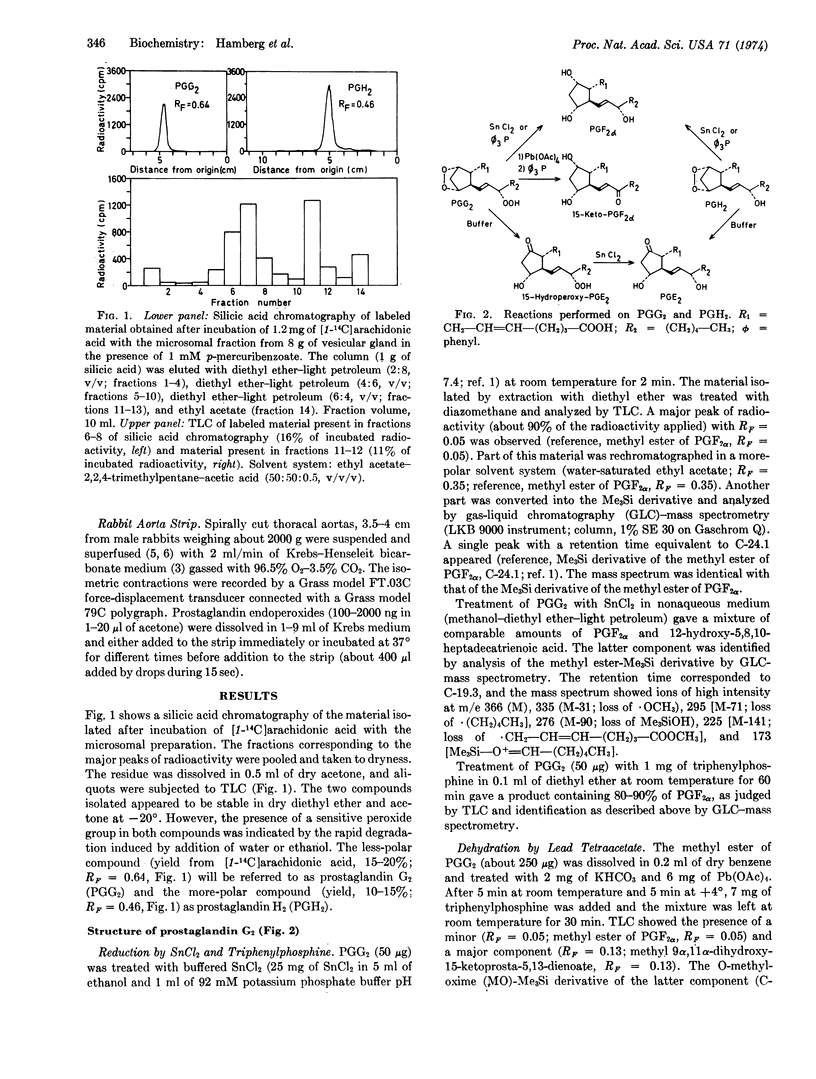
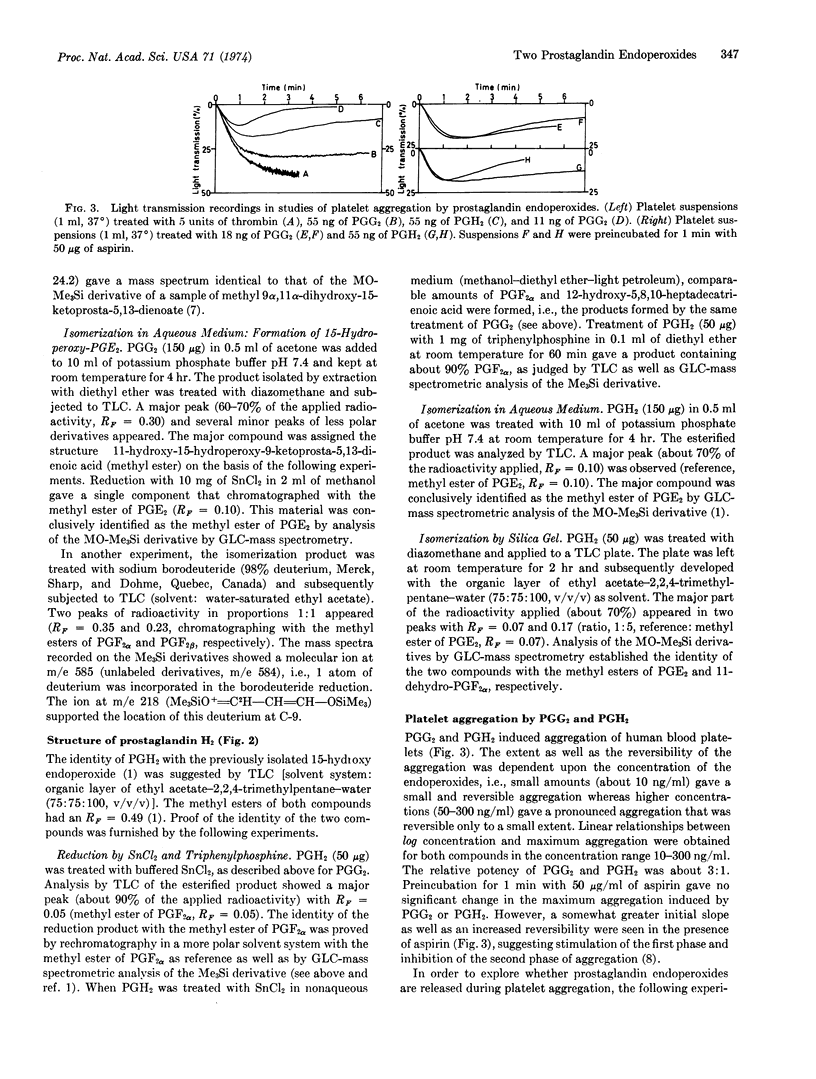
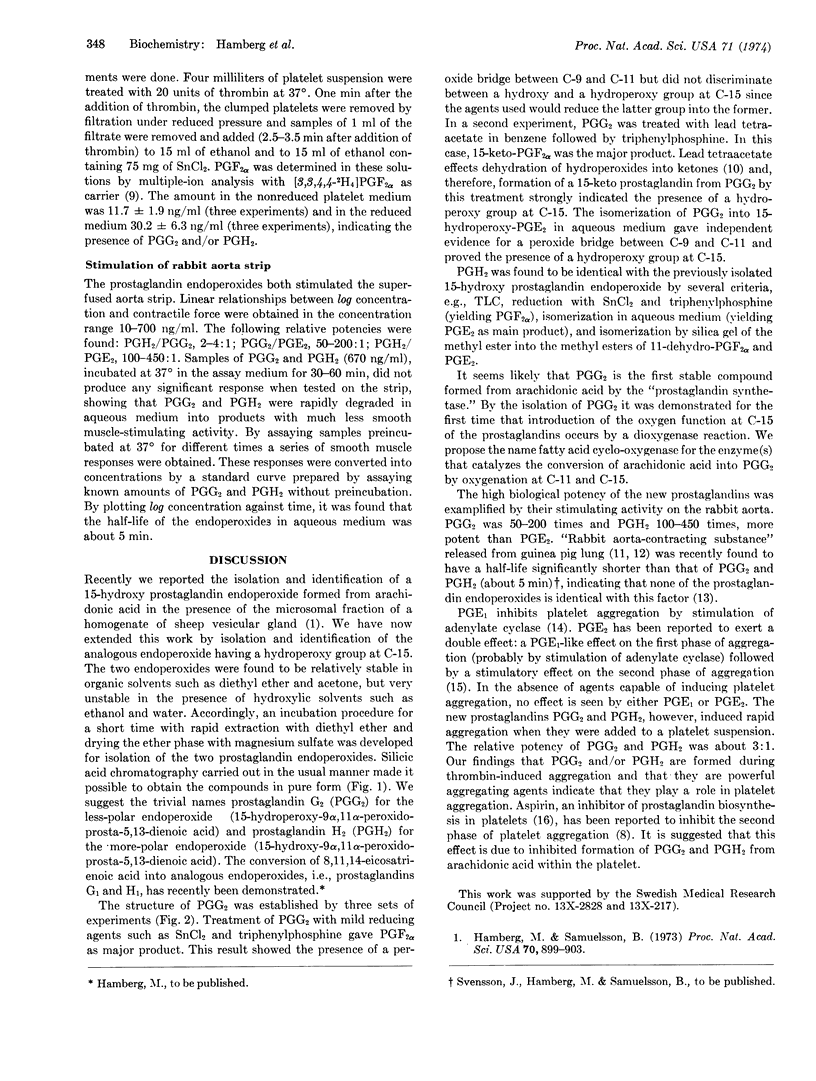
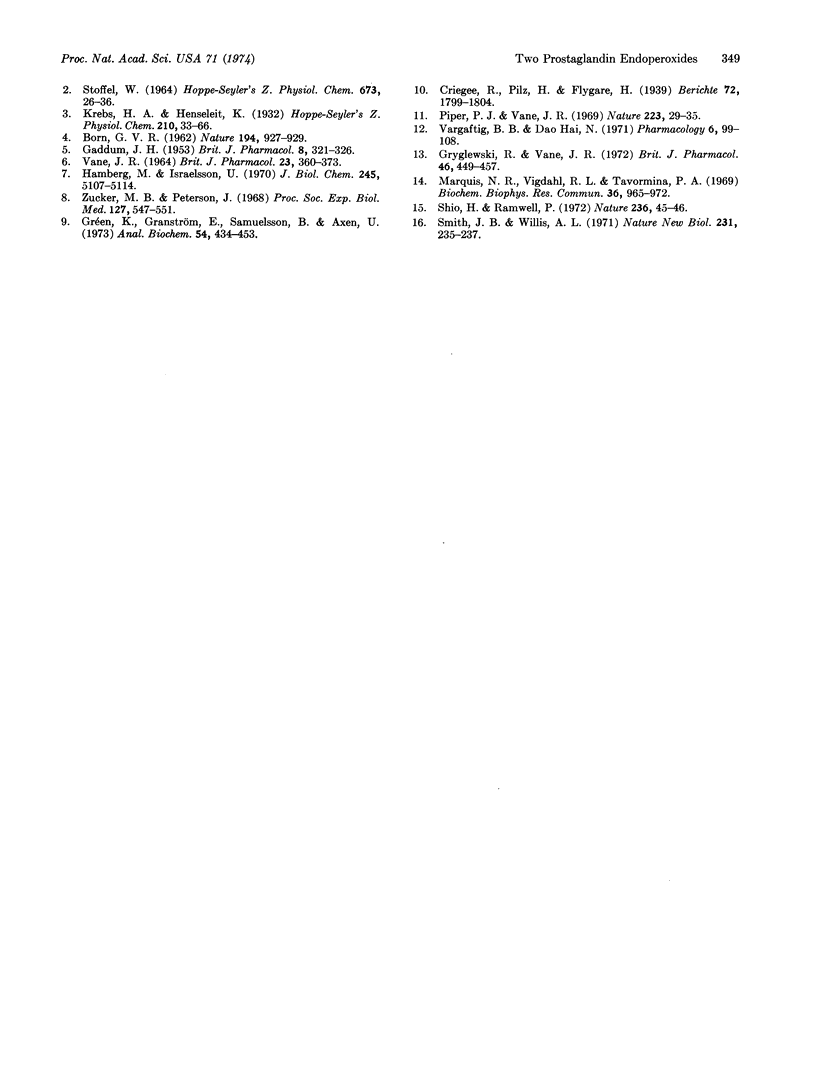
Selected References
These references are in PubMed. This may not be the complete list of references from this article.
- BORN G. V. Aggregation of blood platelets by adenosine diphosphate and its reversal. Nature. 1962 Jun 9;194:927–929. doi: 10.1038/194927b0. [DOI] [PubMed] [Google Scholar]
- GADDUM J. H. The technique of superfusion. Br J Pharmacol Chemother. 1953 Sep;8(3):321–326. doi: 10.1111/j.1476-5381.1953.tb00801.x. [DOI] [PMC free article] [PubMed] [Google Scholar]
- Gryglewski R., Vane J. R. The generation from arachidonic acid of rabbit aorta contracting substance (RCS) by a microsomal enzyme preparation which also generates prostaglandins. Br J Pharmacol. 1972 Nov;46(3):449–457. doi: 10.1111/j.1476-5381.1972.tb08142.x. [DOI] [PMC free article] [PubMed] [Google Scholar]
- Gréen K., Granström E., Samuelsson B., Axen U. Methods for quantitative analysis of PGF2 , PGE2, 9 , 11 -dihydroxy-15-keto-prost-5-enoic acid and 9 , 11 , 15-trihydroxy-prost-5-enoic acid from body fluids using deuterated carriers and gas chromatography--mass spectrometry. Anal Biochem. 1973 Aug;54(2):434–453. doi: 10.1016/0003-2697(73)90373-4. [DOI] [PubMed] [Google Scholar]
- Hamberg M., Israelsson U. Metabolism of prostaglandin E2 in guinea pig liver. I. Identification of seven metabolites. J Biol Chem. 1970 Oct 10;245(19):5107–5114. [PubMed] [Google Scholar]
- Hamberg M., Samuelsson B. Detection and isolation of an endoperoxide intermediate in prostaglandin biosynthesis. Proc Natl Acad Sci U S A. 1973 Mar;70(3):899–903. doi: 10.1073/pnas.70.3.899. [DOI] [PMC free article] [PubMed] [Google Scholar]
- Marquis N. R., Vigdahl R. L., Tavormina P. A. Platelet aggregation. I. Regulation by cyclic AMP and prostaglandin E1. Biochem Biophys Res Commun. 1969 Sep 10;36(6):965–972. doi: 10.1016/0006-291x(69)90298-8. [DOI] [PubMed] [Google Scholar]
- Piper P. J., Vane J. R. Release of additional factors in anaphylaxis and its antagonism by anti-inflammatory drugs. Nature. 1969 Jul 5;223(5201):29–35. doi: 10.1038/223029a0. [DOI] [PubMed] [Google Scholar]
- Shio H., Ramwell P. Effect of prostaglandin E 2 and aspirin on the secondary aggregation of human platelets. Nat New Biol. 1972 Mar 15;236(63):45–46. doi: 10.1038/newbio236045a0. [DOI] [PubMed] [Google Scholar]
- Smith J. B., Willis A. L. Aspirin selectively inhibits prostaglandin production in human platelets. Nat New Biol. 1971 Jun 23;231(25):235–237. doi: 10.1038/newbio231235a0. [DOI] [PubMed] [Google Scholar]
- VANE J. R. THE USE OF ISOLATED ORGANS FOR DETECTING ACTIVE SUBSTANCES IN THE CIRCULATING BLOOD. Br J Pharmacol Chemother. 1964 Oct;23:360–373. doi: 10.1111/j.1476-5381.1964.tb01592.x. [DOI] [PMC free article] [PubMed] [Google Scholar]
- Zucker M. B., Peterson J. Inhibition of adenosine diphosphate-induced secondary aggregation and other platelet functions by acetylsalicylic acid ingestion. Proc Soc Exp Biol Med. 1968 Feb;127(2):547–551. doi: 10.3181/00379727-127-32737. [DOI] [PubMed] [Google Scholar]


